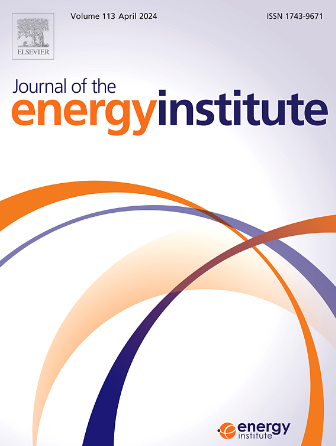Recovering value-added hydrocarbons from aluminum foil-laminated plastic residue through catalytic pyrolysis using WO3 supported on rice husk ash
IF 5.6
2区 工程技术
Q2 ENERGY & FUELS
引用次数: 0
Abstract
Following a circular economy strategy, recovering value-added hydrocarbons from plastic residues through catalytic pyrolysis is an innovative and promising approach for both resource conservation and refuse valorization. The main objective of the current work is to investigate the impact of tungsten trioxide (WO3) supported on rice husk ash (RHA) as a new, low-cost catalyst on the flash pyrolysis of aluminum foil-laminated plastic residue. The catalyst performance was investigated using a micro-furnace temperature-programmable pyrolyzer interfaced with gas chromatographic separation and mass spectrometry detection. The energy-related attributes of aluminum foil-laminated plastic residue have confirmed its potential as raw material for pyrolytic oil production, owing to its high energy content (31.76 MJ kg−1), volatile matter content (82.5 wt%), moderate ash content (17.5 wt%), negligible fixed carbon content (below 0.01 wt%), and predominant mass loss below 500 °C. The catalytic test results demonstrated that the concentration of alkanes increased by 2.5-fold and cyclic aliphatic compounds by 1.9-fold when utilizing the WO3/RHA catalyst compared to non-catalytic pyrolysis. From the hydrocarbon distributions, success was achieved by the WO3/RHA catalyst in the cracking of heavy hydrocarbons (above C12) into valuable light hydrocarbons (C5–C12). The results permit us to conclude that utilizing the WO3/RHA catalyst enhances the yield of alkanes and cyclic aliphatic compounds within the C5–C12 range in the condensable volatile products, which are valuable gasoline-range hydrocarbons. Utilizing the proposed catalyst offers a potentially low-cost way to convert plastic waste into gasoline-range transportation fuel, enabling the achievement of a circular economy for plastic residues through catalytic pyrolysis, unlike traditional treatment methods.

求助全文
约1分钟内获得全文
求助全文
来源期刊

Journal of The Energy Institute
工程技术-能源与燃料
CiteScore
10.60
自引率
5.30%
发文量
166
审稿时长
16 days
期刊介绍:
The Journal of the Energy Institute provides peer reviewed coverage of original high quality research on energy, engineering and technology.The coverage is broad and the main areas of interest include:
Combustion engineering and associated technologies; process heating; power generation; engines and propulsion; emissions and environmental pollution control; clean coal technologies; carbon abatement technologies
Emissions and environmental pollution control; safety and hazards;
Clean coal technologies; carbon abatement technologies, including carbon capture and storage, CCS;
Petroleum engineering and fuel quality, including storage and transport
Alternative energy sources; biomass utilisation and biomass conversion technologies; energy from waste, incineration and recycling
Energy conversion, energy recovery and energy efficiency; space heating, fuel cells, heat pumps and cooling systems
Energy storage
The journal''s coverage reflects changes in energy technology that result from the transition to more efficient energy production and end use together with reduced carbon emission.
 求助内容:
求助内容: 应助结果提醒方式:
应助结果提醒方式:


